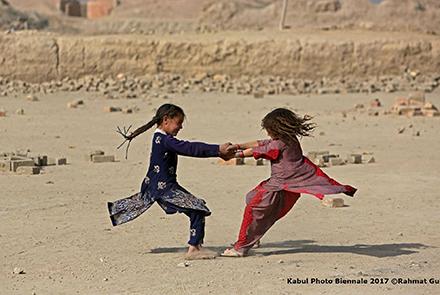The Asia Foundation’s 13th annual public opinion survey of the Afghan people has found that this year there is a slight increase in optimism among the public which has risen marginally from 29.3 percent last year to 32.8 percent this year.
The report stated that this year’s slight increase in optimism is difficult to explain.
The survey found that although optimism had improved slightly, reasons for hope among Afghans was due to the rebuilding of the country (51 percent) and improved security (50.6 percent).
“This year’s general increase in reported optimism applies to all ethnic groups, with the exception of Uzbeks. Pashtuns are the most optimistic about the direction of the country (40.6 percent), compared to Tajiks (29.3 percent), and Hazaras (26.2 percent). The proportion of Uzbeks who say the country is moving in the right direction has fallen since last year, from 29.0 percent to 25.8 percent.
Reasons for optimism among Afghans, who say the country is moving in the right direction, was that of the rebuilding of the country, at 51 percent, and improved security at 50.6 percent.
Other reasons include improved governance, 26.7 percent), improved rights for women, 14.9 percent, and economic improvements, 11.6 percent.
On the other hand, reasons for pessimism were insecurity, economic concerns, and governance issues mostly.
Concerns relating to security or crime top the list at 69.5 percent, followed by economic concerns at 39.9 percent, and governance issues at 36.9 percent.
According to David D. Arnold, the President of The Asia Foundation, the nation continues to undergo a complex change and transition but that Afghans continue to weather challenges including a fragmented political system, a decline in aid and growth and ongoing security and terrorism threats
“Even in the face of often seemingly imperceptible progress, Afghans are eager for a better future, and recent data reflects this sentiment,” he said in the report.
This year’s survey gathered the views of more than 97,000 Afghans and provides a longitudinal portrait of evolving public perceptions of security, the economy, governance and government services, elections, media, women’s issues, and migration.
In 2017, the number of Afghans who say the country is moving in the right direction this year has increased.
The downward trajectory in national mood which began in 2013 has reversed, and optimism has risen slightly this year. However, security fears and economic concerns color Afghan attitudes about the future of their country.
“More Afghans indicate they would be willing to leave the country if afforded the opportunity, the second-highest level recorded to date,” stated Arnold in his report.
Almost all Afghans believe corruption is a problem in all areas of their lives, consistent with last year’s data.
At the same time, perceptions of government institutions have improved after a two-year decline. More than half of Afghans surveyed believe the National Unity Government (NUG) is doing a good job, a 7.1-point
increase over 2016 data.
Nearly half of the respondents say they have influence over local government decisions, a notable increase since 2016 while public perceptions of the Afghan National Police, which after 2014 declined in all categories of capacity and performance assessed by the survey, stabilized in 2017.
The report stated that year after year, the survey findings show that the steady gains in the delivery of basic public services - health, education, roads, drinking water, sanitation - make an enormous difference in people’s daily lives and are an antidote to extremism, instability, and vulnerability.
In 2017, Afghans report improvements in the quality of food in the Afghan diet and the health of family members, up from 2016. This year, similar to last year’s data, the majority of Afghans support women working outside the home.
According to Arnold, Afghanistan today remains one of the world’s most challenging research environments. “Against this backdrop, the importance of comprehensive, reliable data cannot be overstated. The survey is a map of social change over time, presenting a concise snapshot of the gains and gaps that Afghans perceive in a rapidly transforming nation.”
He said: “Through this annual project, we are committed to providing a deeper understanding of Afghanistan to help advance informed policymaking and sustain lasting progress.”
The survey found that the Afghan public has increasingly viewed the armed struggle of opposition groups as politically motivated.
This year, when asked about the main reason the Taliban are fighting against the Afghan government, almost one-third of Afghans see gaining power as the Taliban’s primary motivation for fighting.
The report stated that 92 percent fear encouraging the Taliban, 93.9 percent fear encountering Daesh, and 78.6 percent fear encountering international forces.
Another 18.1 percent attribute the fighting to support from foreign countries, including Pakistan, 10.7 percent.
While the Taliban still arouse some sympathy among the population, Daesh lacks any substantial public support. The vast majority of Afghans, 91.5 percent, declare themselves to have “no sympathy” at all for the group. Of the 2.6 percent overall who express some sympathy Daesh, most are in Wardak, where 15.9 percent sympathy for Daesh, and in the West, in the provinces of Herat and Ghor 8.8 percent and 6.0 percent, respectively)
The study found however that there were more sympathizers of Daesh in Khost province, 6.0 percent. According to respondents, including their few supporters, the factors driving Daesh’s involvement in Afghanistan are the desire to gain power, 19.5 percent, and support from foreign countries, 12.3 percent.
On the issue of peace and reconciliation only half of the Afghan respondents (52.3 percent) believes in 2017 that reconciliation with the Taliban is possible.
Economic concerns meanwhile continue to color Afghan attitudes about the future of the country. Among the 61.2 percent of Afghans who say the country is moving in the wrong direction, unemployment (27.2 percent) is the second-most common reason cited after security. Other reasons for
overall pessimism include the poor economy (10.9 percent), lack of reconstruction (4.6 percent), and high prices (3.9 percent).
Compared to previous years, more Afghans than ever before report owning at least one TV (66.4 percent in 2017 compared to 61.3 percent in 2016), an increase seen both in rural areas and urban areas.
When asked how many members of their household have a mobile phone, 86.6 percent of Afghans report owning at least one, a slight decrease from 88.8 percent in 2016.
Meanwhile educational attainment among adults remains low in Afghanistan, with just under half of the adult population reporting no formal schooling (48.4 percent). Looking more closely at the different levels of schooling, 15.8 percent say they have attended primary school, 25.8 percent have attended secondary school (middle and high school), and 7.9 percent say they have attended university.
After a two-year decline in Afghan perceptions of how well various government institutions do their job, including a historic decline in 2016, perceptions this year have improved. More than half of Afghans surveyed (56.2 percent) believe the National Unity Government (NUG) is doing a good job (“very good” or “somewhat good”), a 7.1-point increase over 2016 (49.1 percent).
A similar improvement can be seen this year at the provincial level, as 56.9 percent of Afghans report satisfaction with their provincial governments. Urban residents are more satisfied with municipal government in 2017 (up from a record low of 42.4 percent in 2016 to 47.1 percent this year),
and rural respondents are more satisfied with their district governments (up from 50.7 percent in 2016 to 55.8 percent this year).
However, almost all Afghans believe corruption is a problem in all areas of their lives, with 83.7 percent saying corruption is a major problem in Afghanistan as a whole, while 13.1 percent say it is a minor problem.
The study meanwhile found that this year, 51.5 percent of Afghans say they experience “some” fear or “a lot” of fear while participating in a national elections, down slightly from 53.7 percent in 2016. Women (55.1 percent) are slightly more likely than men (47.9 percent) to report fear while voting.
Also, this year Afghans who say that religious leaders should be involved in politics is slightly higher, at 61.6 percent, than in 2016 Survey, at 57.2 percent. Residents of the South West (76.6 percent) and East (74.7 percent) are most likely to support the involvement of religious leaders in politics, while residents of the West (53.1 percent) and North West (55.3 percent) are least likely to support this view.
For the full report Click Here


